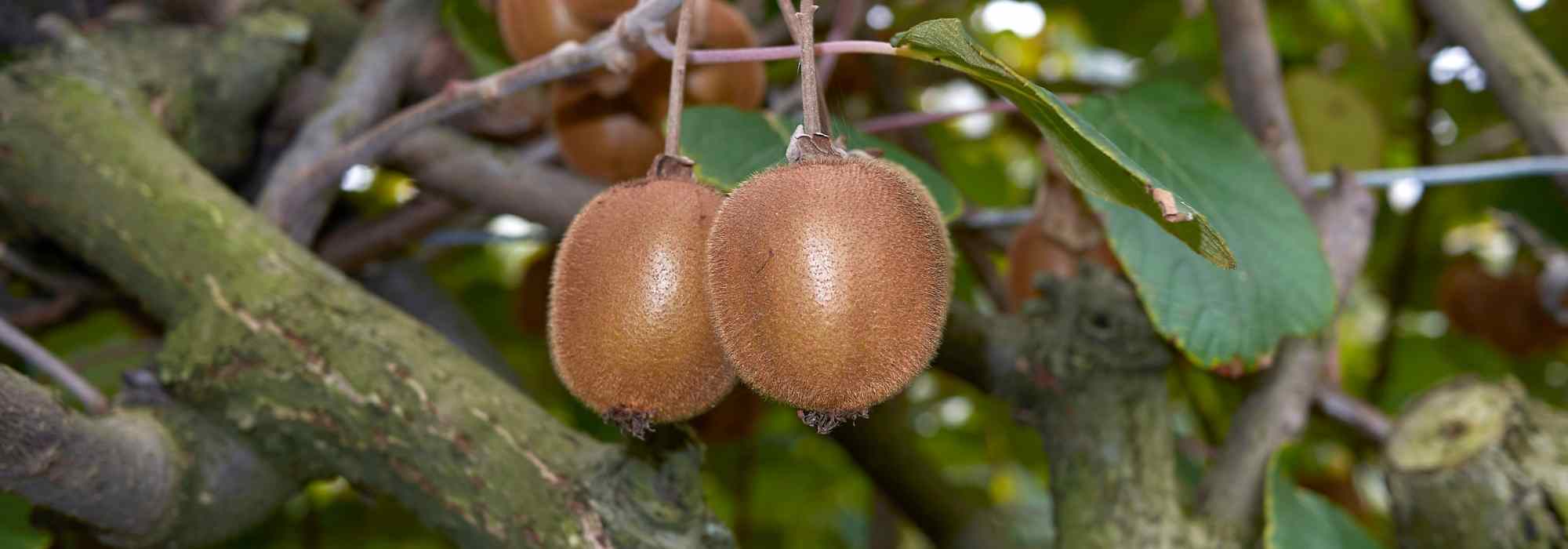
Male or female kiwi: how to distinguish them?
For good kiwifruit production
Contents
Kiwi or Chinese gooseberries such as kiwiberries or Siberian kiwi are climbing fruit-bearing bushes that are dioecious. There are therefore male and female plants. Although self-fertile varieties now exist, plant one male for several female plants to obtain good fruit production. How to tell male from female plants? Can self-fertile varieties be trusted? Let’s review the essentials in this article.
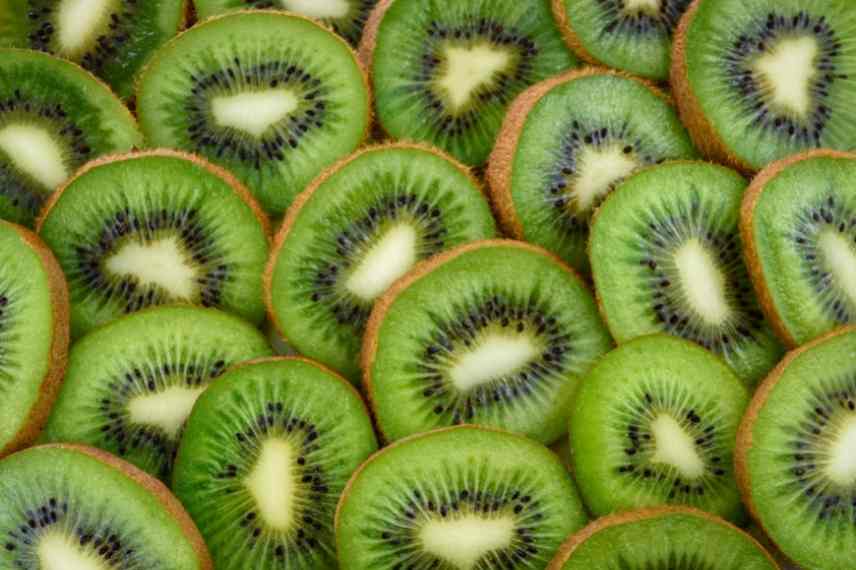
How to ensure a good yield of green-fleshed fruit?
A little botany...
Kiwis are lianas grouped in the genus Actinidia and in the family Actinidiaceae. There are about thirty species of “Chinese gooseberry” worldwide, but most common are: Actinidia deliciosa with kiwifruit with fuzzy skin, Actinidia chinensis with smooth fruits and Actinidia arguta or “Siberian kiwi” which produces kiwiberries, a kind of mini-kiwi.
These three species of climbing bushes are dioecious: that is, there are individuals bearing male flowers and individuals bearing female flowers. Only female young plants bear fruit. In other words, to obtain a fruit crop, you will need to plant at least one male plant for one to five female young plants a few metres apart.
There are now self-fertile varieties (see below) such as ‘Solissimo’ or ‘Jenny’ that allow fruit to be obtained from a single young plant.

Actinidia deliciosa, Actinidia chinensis, and Actinidia arguta (or kiwiberry)
Read also
Growing kiwiHow to tell male kiwifruit plants from female ones?
You should look at the flowers for this. It is, in fact, the only way to avoid a labelling error at the retailer or nursery: buying your Actinidia young plants during flowering between May and June for planting in autumn. This will help you avoid disappointment.
Female flowers: they measure 3 to 4 cm in diameter and are yellowish-white in colour. These five-petalled flowers are solitary and axillary (which originate from the axil of a leaf). They bear short stamens carrying sterile pollen, surrounding white stigmas.
Male flowers: they are smaller than the females and cream-white in colour. These five-petalled flowers are grouped in cymes of three featuring numerous fertile stamens, very prominent, golden and powdery. It should be noted that these flowers lack nectar and, consequently, attract few pollinators, which will prefer other flowers. But if your garden is teeming with life, there is little to worry about regarding pollination. Male plants are more floriferous than female plants.
Kiwai or Siberian kiwi flowers are smaller, 2 cm in diameter, but show the same characteristics in terms of sexual differentiation.
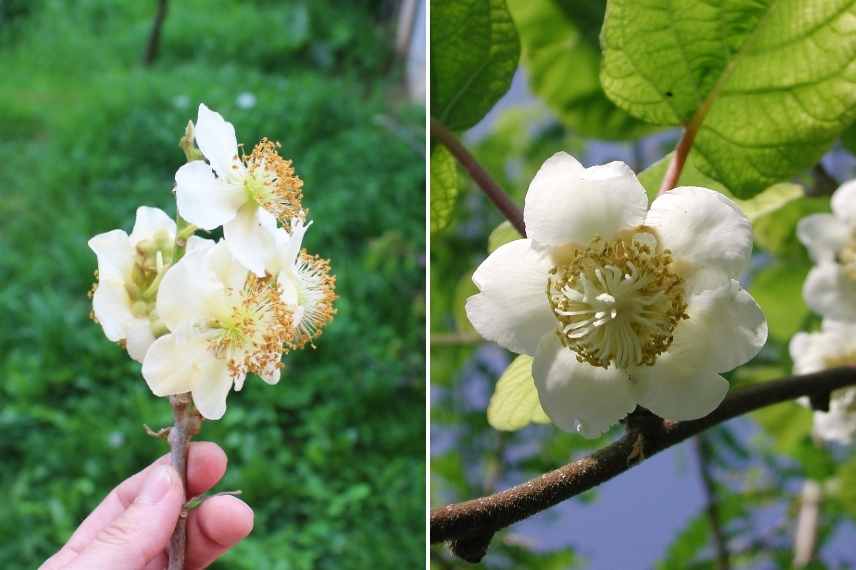
Male flower on left, female flower on right of kiwi
Discover other Kiwi bush
View all →Available in 0 sizes
Available in 0 sizes
Available in 0 sizes
Available in 1 sizes
Available in 1 sizes
Available in 2 sizes
Available in 1 sizes
Available in 1 sizes
Available in 1 sizes
Available in 1 sizes
Which varieties are male and which are female?
To achieve a good kiwi crop, you will need to plant one male young plant for every few female young plants. Take care of two things: that they are both of the same species and that they flower at the same time.
Here are some example varieties:
- Male kiwi varieties: ‘Atlas‘, ‘Tomuri’
- Female kiwi varieties: ‘Minkigold’, ‘Monty‘ or ‘Kiwi Wonder’
- Male hardy kiwi varieties: ‘Weikii‘ or ‘Nostino’.
- Female hardy kiwi varieties: ‘Ken’s Red’, ‘Geneva’ or ‘Ambrosia‘.
To ensure good fertilization of the flowers, here are examples of perfect pairings: female kiwi ‘Hayward’ and male kiwi ‘Atlas’ or female hardy kiwi ‘Ken’s Red’ and self-fertile (but nonetheless pollinator) hardy kiwi ‘Issaï’.
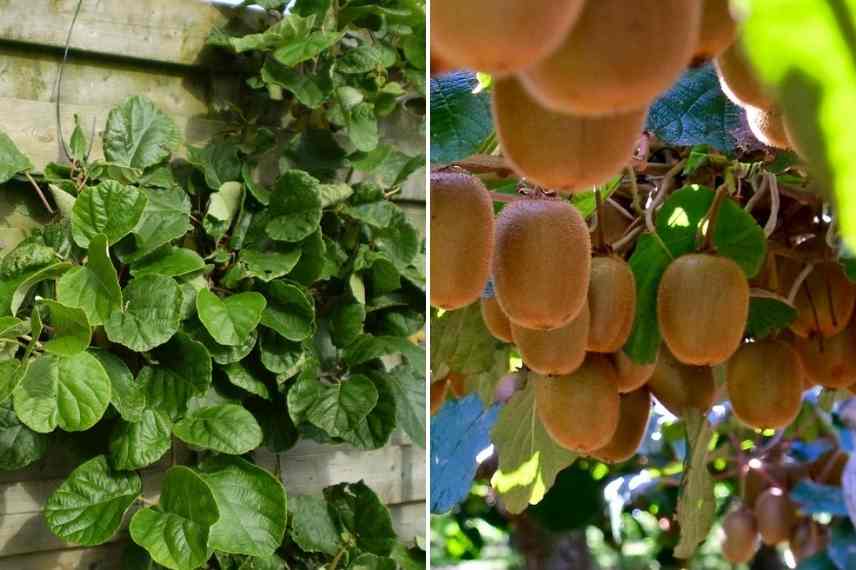
Male kiwi ‘Atlas’ and female kiwi ‘Monty’
Self-fertile kiwifruit: a special case
Self-fertile kiwi is a variety of kiwi that can produce fruit without needing to be pollinated by a male plant. A single plant is sufficient for fruit production, which is especially convenient for gardeners who have limited space or who do not wish to install several young plants.
Some self-fertile kiwis come from sowings selected for their self-fertile properties, while others may be the result of genetic modifications or cross-breeding between different varieties.
The main advantage of these kiwis is, of course, the simplification of pollination, which promotes abundant fruiting without needing a male plant. This also saves space in garden or vegetable patch and makes care and maintenance easier. However, one major drawback is often the size of the fruit, which can be smaller than that of kiwis from non-self-fertile varieties. Furthermore, the flavour quality of the fruit can also be slightly lower compared with classic varieties that require cross-pollination.
There are some interesting varieties: ‘Jenny’, ‘Solo’ or ‘Solissimo’ (the latter producing larger fruit than other self-fertile varieties) or ‘Issaï‘ for kiwiberries.
please note: The self-fertile plant produces flowers that contain both male and female organs, allowing it not only to self-pollinate but also to pollinate female varieties. So, a self-fertile young plant can very well serve as a substitute male young plant if you cannot find any in nurseries. One self-fertile kiwi for four or five female kiwis and you’re set!
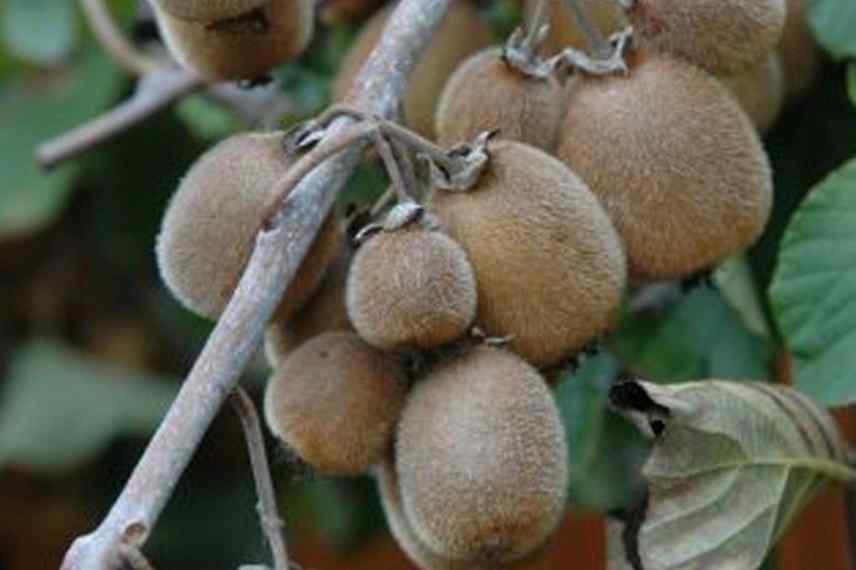
Self-fertile kiwi ‘Solissimo’
- Subscribe!
- Contents
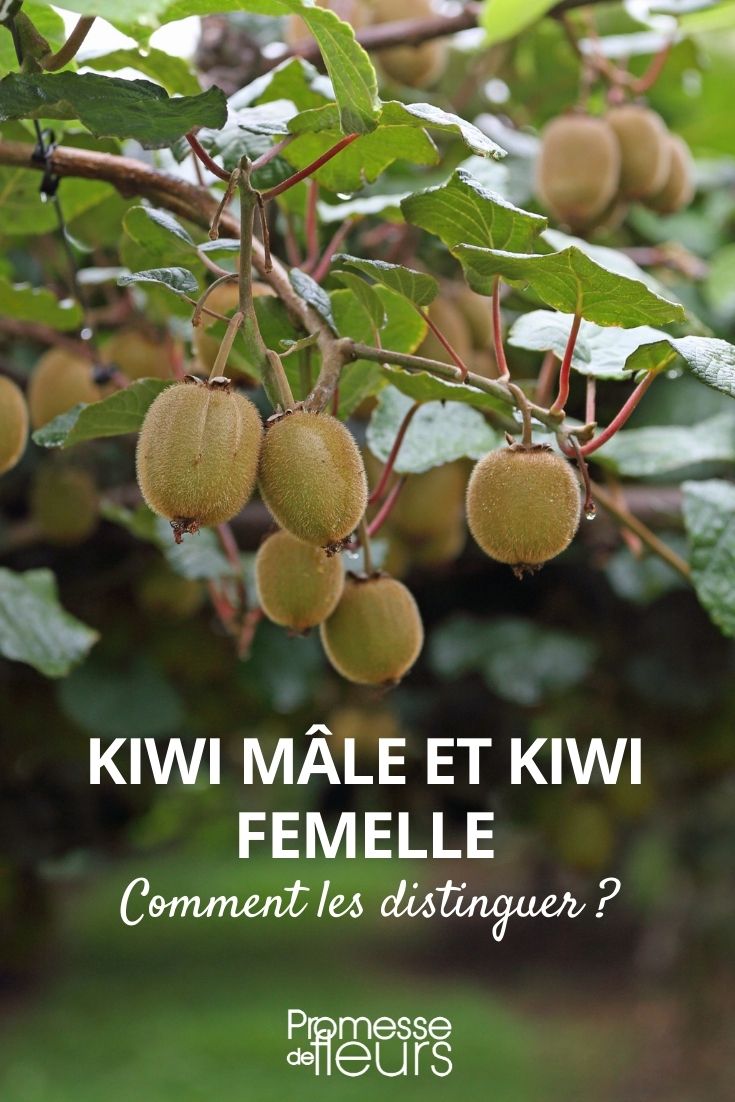































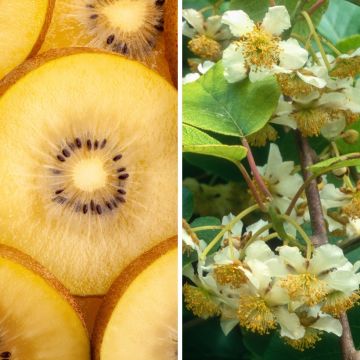
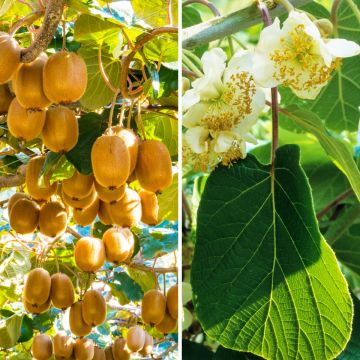
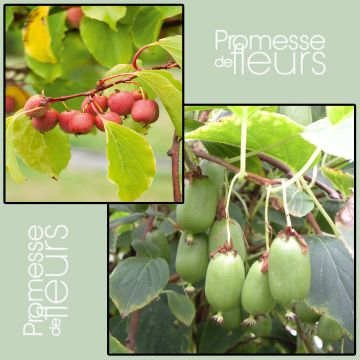
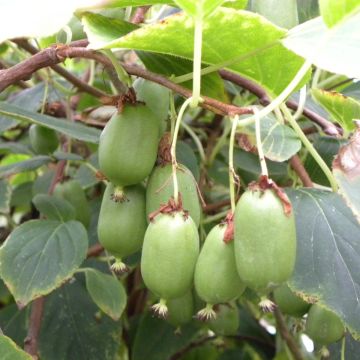
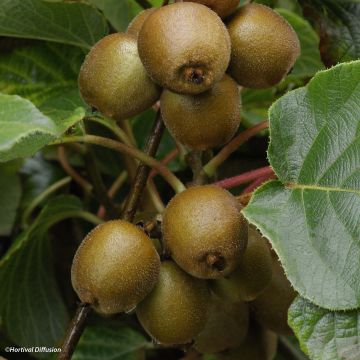
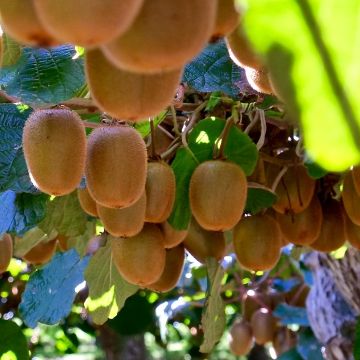
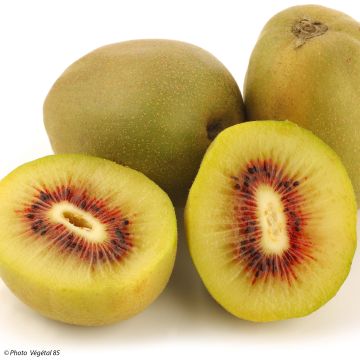
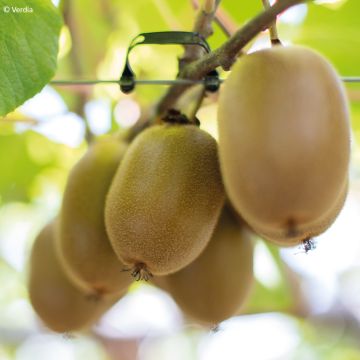
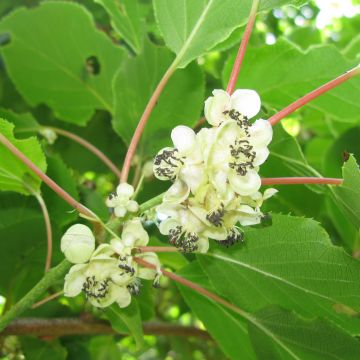
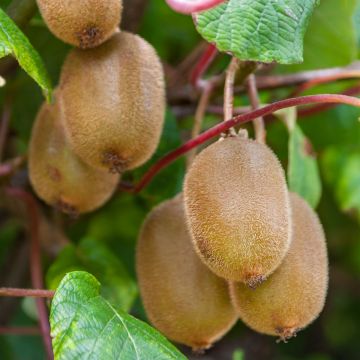
Comments